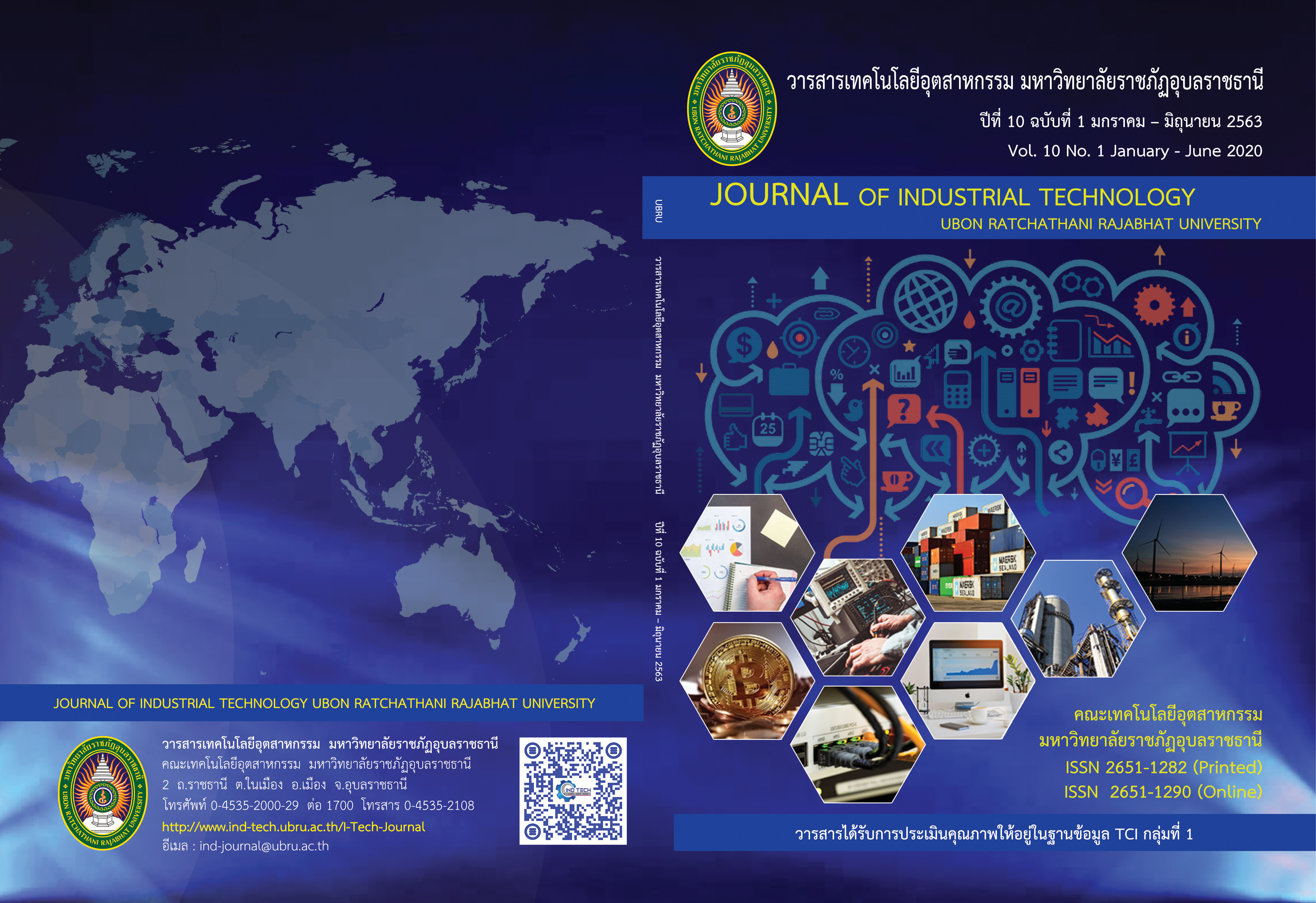ระบบพยากรณ์เพื่อสนับสนุนการวางแผนแก้ไขปัญหาภาระของหม้อแปลงไฟฟ้าเกินพิกัดของการไฟฟ้าส่วนภูมิภาคด้วยเทคโนโลยีเหมืองข้อมูลขนาดใหญ่
Main Article Content
บทคัดย่อ
ปัญหาที่ทุกองค์กรให้ความสนใจส่วนใหญ่มักหลีกหนีไม่พ้นเรื่องรายได้และความน่าเชื่อถือ ในงานวิจัยชิ้นนี้จึงได้หยิบยกขั้นตอนการแก้ไขปัญหาภาระการใช้งานของหม้อแปลงเกิน ที่มีผลกระทบต่อการไฟฟ้าส่วนภูมิภาค (PEA) ทั้งทางด้านรายได้และความน่าเชื่อถือมาพัฒนาเพื่อสนับสนุนในการวางแผนในการตรวจสอบและบำรุงรักษาหม้อแปลง โดยงานวิจัยชิ้นนี้ได้นำเสนอกระบวนการรูปแบบใหม่สำหรับการวางแผนสำรวจสถานะของหม้อแปลงโดยใช้แบบจำลองการวิเคราะห์ข้อมูลขนาดใหญ่ (Big Data Analytics) พยากรณ์สถานะของหม้อแปลงไฟฟ้า โดยใช้ข้อมูลหม้อแปลงไฟฟ้าระดับแรงดัน 22 กิโลโวต์ ของการไฟฟ้าส่วนภูมิภาค และ ภาระการใช้กระแสไฟฟ้าของมิเตอร์ โดยประสิทธิภาพของแบบจำลองจะนำเสนอผ่านแบบจำลองแบบดั้งเดิม คือ Distributed Random Forest และ Gradient Boosting Machine เปรียบเทียบกับแบบจำลองรูปแบบใหม่การเรียนรู้เชิงลึก(Deep Learning) โดยใช้เกณฑ์การประเมิน Root Mean Square Error(RMSE), Mean Square Error (MSE) และ ค่า R-square
Article Details

อนุญาตภายใต้เงื่อนไข Creative Commons Attribution-NonCommercial-NoDerivatives 4.0 International License.
บทความที่ได้รับการตีพิมพ์ในวารสารฯ ท้ังในรูปแบบของรูปเล่มและอิเล็กทรอนิกส์เป็นลิขสิทธิ์ของวารสารฯ
เอกสารอ้างอิง
L. C. Nichols. Effect of overloads on transformer life. Electr. Eng. Dec. 1934., vol. 53, no. 12, p.1616–1621.
P. K. BL and R. Mathew. Asset management of transformer based on loss of Life calculation. IEEE 6th International Conference on Power Systems (ICPS); 2016 p.1–5.
R. E. Brown, Electric Power Distribution Reliability, Second Edition: CRC Press; 2008.
We Are Social. Digital in 2018. World’s internet users pass the 4 billion mark [Internet]. 30-Jan-2018. Available From: https://wearesocial.com/blog/2018/01/global-digital-report-2018.
A. Katal, M. Wazid, and R. H. Goudar. Big data: Issues, challenges, tools and Good practices. Sixth International Conference on Contemporary Computing (IC3); 2013 p. 404–409.
Y. Wang. L. Kung. and T. A. Byrd. Big data analytics: Understanding its capabilities and potential benefits for healthcare organizations. Technol. Forecast. Soc. Change. Jan. 2018., vol. 126, p. 3–13.
A. Urbinati. M. Bogers. V. Chiesa, and F. Frattini. Creating and capturing value from Big Data: A multiple-case study analysis of provider companies. Jul. 2018,Technovation.
ESRI Thailand. GIS Mapping Software, Spatial Analysis, and Location Intelligence [Internet].
-Dec-2018. Available From: http://www.esrith.com/about/esrithailand/. (in Thai)
C. Brady and V. B. Gargeya. Success and failure factors of adopting SAP in ERP system implementation. Oct. 2005., Bus. Process Manag. J. vol.11. no.5. p. 501–516.
S. Landset, T. M. Khoshgoftaar, A. N. Richter, and T. Hasanin. A survey of open source tools for machine learning with big data in the Hadoop ecosystem. Nov.2015., J. Big Data. vol.2. no.1. p.24.
R. Genuer, J.-M. Poggi, and C. Tuleau-Malot. Variable selection using random forests. Oct. 2010., Pattern Recognit. Lett. vol.31. no.14. p.2225–2236.
A. Verikas, A. Gelzinis, and M. Bacauskiene. Mining data with random forests: A survey and results of new tests. Feb.2011., Pattern Recognit. vol.44. no.2. p.330–349.
S. Touzani, J. Granderson, and S. Fernandes. Gradient boosting machine for modeling the energy consumption of commercial buildings. Jan.2018., Energy Build. vol.158. p.1533–1543.
M. M. Najafabadi, F. Villanustre, T. M. Khoshgoftaar, N. Seliya, R. Wald, and E. Muharemagic. Deep learning applications and challenges in big data analytics. Feb.2015., J. Big Data. vol.2. no.1. p.1.
J. Schmidhuber. Deep learning in neural networks: An overview. Jan.2015., Neural Netw. vol.61. p.85–117.
Q. Zhang, L. T. Yang, Z. Chen, and P. Li. A survey on deep learning for big data. Jul.2018., Inf. Fusion. vol.42. p.146–157.
Y. LeCun, Y. Bengio, and G. Hinton. Deep learning. May.2015., Nature. vol.521. no.7553. p.436–444.
D. G. Murray. Tableau Your Data!: Fast and Easy Visual Analysis with Tableau Software. John Wiley & Sons.; 2013.


